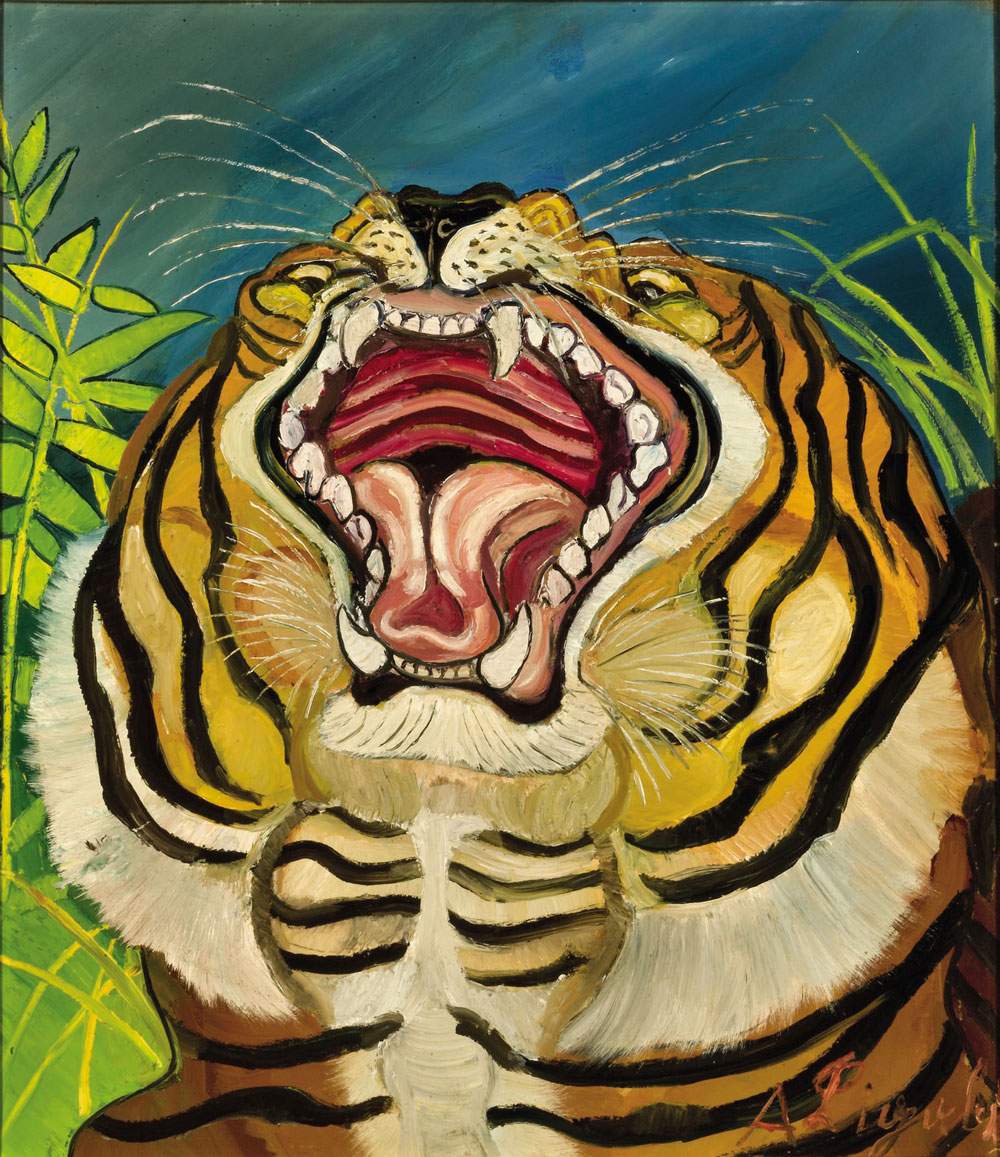A major exhibition dedicated to Antonio Ligabue, entitled Ligabue and Vitaloni. Giving Voice to Nature, will be staged in Parma at the 16th-century Palazzo Tarasconi from September 17, 2020 to May 30, 2021. The exhibition will inaugurate the new exhibition space.
Conceived and realized by Augusto Agosta Tota, Marzio Dall’Acqua and Vittorio Sgarbi, organized by the Antonio Ligabue Study and Archive Center of Parma and promoted by the Antonio Ligabue Archive Foundation of Parma, the exhibition, which is part of the calendar of initiatives of Parma Italian Capital of Culture 2020+21, will present eighty-three paintings and four sculptures by the artist. Through the works on display, the themes that most characterized his artistic production will be analyzed: from self-portraits, to landscapes, to wild and domestic animals.
In addition, the exhibition includes a section with fifteen plastic works by Michele Vitaloni (Milan, 1967), who shares with Ligabue a special empathy for the natural and animal world.
“The exhibition,” commented Augusto Agosta Tota, “presents Ligabue’s masterpieces, flanked by the sculptures of Michele Vitaloni, his contemporary epigone, both attracted to the world of nature, wild animals and their life force. An exhibition at once fascinating and full of very topical food for thought that, in addition to being one of the initiatives included in the calendar of Parma Italian Capital of Culture 2020+21, will give the public the opportunity to discover a new and evocative exhibition space, in the 16th-century Palazzo Tarasconi, in the heart of the ducal city.”
The visually striking and theatrical installation, specially designed by Cesare Inzerillo, will take the visitor insideLigabue’s creative imagination, analyzing the artist’s most popular subjects.
The self-portraits constitute a perennial and constant human condition of anguish, desolation and bewilderment; his face expresses pain, fatigue, the ache of living.
“There is the inner world that is exhibited in his self-portraits,” said Vittorio Sgarbi. “Ligabue talks to himself, he asks himself and asks us something. Again, discomfort is evident. Ligabue beats his head with a rock, tries to drive away evil spirits. Self-portraiture is not a form of narcissism, it expresses the need to understand oneself better, in a process of self-analysis. The self-portrait is the image of malaise, and Ligabue is keen to make it known.”
An important nucleus of works is then dedicated to the natural world, in particular to the animal kingdom; both to that of the lower Po Valley, set in an everyday life of hard work in the fields (as in the 1961 canvas Plowing), or of simple rural life (as in the 1930 painting Courtyard), but above all to the wild world, where the protagonists are tigers, lions, leopards, and hyenas, which Ligabue first studied on the pages of books and then painted, identifying with them to the point of assuming their attitudes. Exemplary are some of the works exhibited in Parma, such as Leopard with Buffalo and Hyena (1928), Tiger Assaulted by Snake (1953), King of the Forest (1959), Black Widow (1951).
“The animals Ligabue sees in the forest,” Sgarbi further adds, “are symbols of strength, of energy, emblems of a desire for freedom, for redemption. Ligabue, a humiliated and marginalized man, as a painter asserts himself and wins through the glorious power of the animal. The tiger dominates the forest, its aggressiveness is winning, but its victory is danger, it is the warlike dimension of humanity. Ligabue talks about himself, defines his world, seen and imagined, and yet real. And if he speaks of himself, he does not speak to himself because he does not have to communicate anything to himself.”
Ligabue’s legacy reaches into contemporary times. In fact, the exhibition features a group of works by Michele Vitaloni, a leading representative of Wildlife Art and sculptural hyperrealism. Like the Toni, Vitaloni is drawn to the allure of the wild animal figure, the elegance of their bodies reflecting the wild side of human nature. Fifteen large-scale sculptures will confront Ligabue’s masterpieces, telling the urgency of that energy of the animal world that belongs to all human beings.
On the occasion of the exhibition, the Antonio Ligabue Archive Foundation of Parma will present the General Catalogue of Antonio Ligabue. Paintings, Sculptures, Drawings and Engravings, in three volumes, (bilingual Italian and English edition) with texts by Augusto Agosta Tota, Vittorio Sgarbi, Flavio Caroli, Marzio Dall’Acqua, among others.
The review is dedicated to the memory of Flavio Bucci, the actor who passed away last Feb. 18 and whose unforgettable performance had given Antonio Ligabue his face in the film directed in 1982 by Salvatore Nocita.
Image: Antonio Ligabue, Head of a Tiger (1953-54, oil on faesite, 66.4 x 57.4 cm)
 |
| A major exhibition dedicated to Ligabue, including wild animals and self-portraits. From September in Parma |
Warning: the translation into English of the original Italian article was created using automatic tools. We undertake to review all articles, but we do not guarantee the total absence of inaccuracies in the translation due to the program. You can find the original by clicking on the ITA button. If you find any mistake,please contact us.